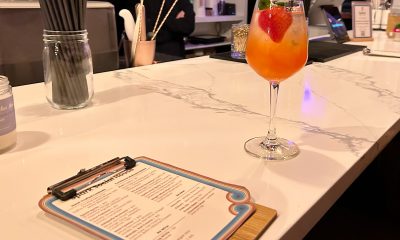Galleries
Baltimore Museum exhibit ‘Queer Interiors’ features trans-curated domestic depiction
Local artists present queer bedroom space featuring movie quilt; it runs through Aug. at BMA

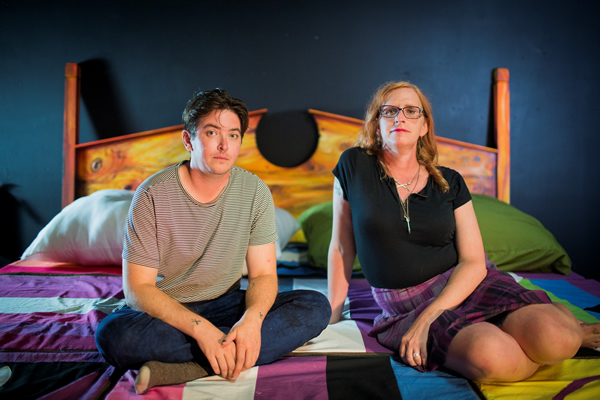
Jaimes Mayhew, left, and Rahne Alexander. (Photo by Jill Fannon; courtesy BMA)
Bedrooms can be private spaces, but “Queer Interiors,” an exhibit at the Baltimore Museum of Art (10 Art Museum Dr., Baltimore), has opened one bedroom to the public that intimately explores the LGBT community.
“Queer Interiors,” which runs through August, is part of BMA’s Commons Collaboration series centered on the theme “Imagining Home.” Transgender artists Jaimes Mayhew and Rahne Alexander heard about the project and decided to create a bedroom centered on queerness.
The exhibit features “Identity Shelves,” a display that holds personal artifacts from various people’s homes, and the “LGBTQUI Home Movie Quilt,” that features a video project of changing photographs of individuals from Baltimore’s LGBT community. The movie quilt is designed similarly to Baltimore’s album quilts and the iconic AIDS Quilt. The most eye-catching piece is a giant bed with a wooden headboard that visitors are invited to sit on.
The room is designed to look like an everyday bedroom and for Alexander, the concept of ordinary was her inspiration for the exhibit, which was originally named “Queer Quotidian,” a word meaning ordinary.
“For many years I worked in a retail environment where, for a lot of people, I was the first or only trans person they had real interactions with,” Alexander says. “As that happened, it became clear to me that was one of the better forms of activism I had ever engaged in. Just providing that kind of connection, a very ordinary and mundane kind of thing. There’s a huge power in that. So that’s something that really fueled our proposal.”
As for why the pair chose a bedroom as the focal point, Mayhew says its a place of contention for the LGBT community.
“Rahn and I started talking about what it means to queer a home,” Mayhew says. “The bedroom obviously is where a lot of laws are made about queer bodies and what we are and aren’t allowed to do.”
Alexander and Mayhew pitched the idea to BMA in February, 2016 and their project was accepted by April. With funding from the museum, they transformed the space near the Joseph Education Center into a queer bedroom.
The “LGBTQUI Home Movie Quilt” was one of the more collaborative pieces in the exhibit. Alexander and Mayhew asked for submissions from the Baltimore community to create the quilt. Alexander says they wanted to take advantage of technology to create an exhibit that differentiated from other queer exhibits.
“Everything that is in this exhibit is modular from the identity shift shelf, to the quilt to the bed,” Alexander says. “So the idea was to try to create a more broadband depiction than we’ve seen before to make the museum a more queer-friendly space.”
Alexander says she’s received feedback from members of the LGBT community who have said the exhibit “resonates with me in a phenomenal and fundamental way.” Mayhews thinks LGBT people may not learn anything new about their community, since they are a part of it, but hopes they will benefit from seeing an LGBT exhibit in the museum.
For Mayhews, it’s also important for the non-LGBT community to get educated when they visit.
“If you’re queer-identified and savvy of some of the language than you may or may not learn something from the exhibit but might walk away feeling represented in some kind of way,” Mayhew says. “But I also think it’s really important for those visitors who are not LGBT- identified to learn something from it and feel more depth and understanding of every day life of (LGBT) people.”
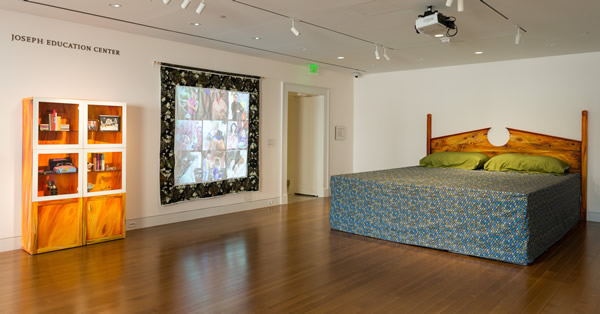
The ‘Queer Interiors’ exhibit at the Baltimore Museum of Art. (Photo courtesy BMA)
Galleries
Blockbuster Amy Sherald exhibit opens in Baltimore
Artist has emerged as LGBTQ hero after refusing to cave to censorship

Artist Amy Sherald has emerged as a hero in the LGBTQ community following her controversial decision to pull her blockbuster new exhibit “American Sublime” from the National Portrait Gallery in D.C. and move it to Baltimore after Smithsonian officials sought to censor her painting “Trans Forming Liberty.”
That painting depicts transgender model Arewà Basit as the Statue of Liberty, which conflicts with President Trump’s war on DEI and his efforts to erase transgender people from the American narrative.
Sherald issued a statement over the summer that the Smithsonian had “concerns” about the painting. “These concerns led to discussions about removing the work from the exhibition,” Sherald said in the statement. “While no single person is to blame, it is clear that institutional fear shaped by a broader climate of political hostility toward trans lives played a role.”
She said the Smithsonian had proposed including a video in the exhibit that would “contextualize” the painting and likely include anti-trans views. It was then she announced her decision to pull the exhibit entirely and move it to the Baltimore Museum of Art, a major coup for the museum.
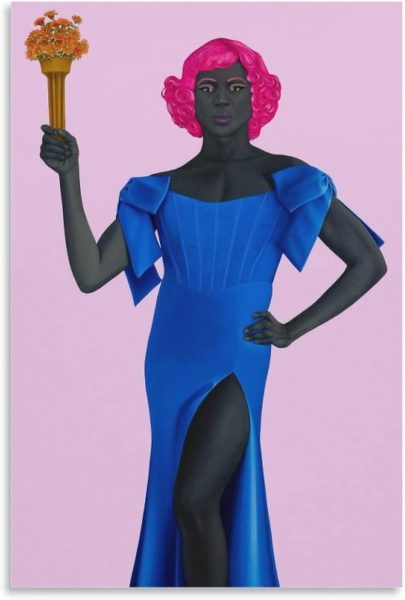
Sherald studied at Baltimore’s Maryland Institute College of Art, which she described as “the best decision I ever made,” during a sold out Q&A on Nov. 2 moderated by the BMA’s director, Asma Naeem. Unfortunately, the subject of censorship and the last-minute decision to move the exhibit to the BMA didn’t come up during the discussion. But Naeem rightly described Sherald as “one of the most important painters of our time.”
“American Sublime,” billed as a mid-career retrospective, features 38 of Sherald’s paintings, including her portraits of former first lady Michelle Obama and Breonna Taylor, along with “Trans Forming Liberty.”
Sherald and Naeem joked throughout the breezy hour-long conversation and reminisced about spending time at MICA and in Baltimore. The artist said she still finds inspiration and even potential portrait subjects in grocery stores and on the streets of Baltimore and New York, where she now lives. Many of the portraits in the exhibit were painted in Baltimore.
Although Sherald and Naeem kept it light and avoided discussing censorship, the one serious and non-negotiable subject Sherald addressed was the paramount importance of integrity. Her insistence on the integrity of the work and the inclusion of trans representation in the exhibit brought her to the difficult decision to pull her work from the Smithsonian. It was a bold and inspiring move in a time when so many public figures, CEOs, and politicians have shown a disappointing and dangerous lack of integrity in the face of an administration that seeks to subvert the Constitution and erode the First Amendment. Sherald stands as a powerful symbol of resistance and, yes, integrity in these dark times. Her refusal to cave to authoritarian impulses and blatant censorship will be remembered for years to come. The nation’s top tech CEOs and congressional leaders should see this exhibit and learn from her brave example.
“American Sublime” is open now through April 5 at the Baltimore Museum of Art and requires a paid ticket for entry. (Admission is free on Thursday evenings and free on Jan. 15 and Feb. 19. The museum is closed Mondays and Tuesdays.) For more information and tickets visit artbma.org.
Galleries
New gallery opening in D.C.
Dandelion Collective exhibition features works by John Von Sauerhoff

Dandelion Collective, a new space in Columbia Heights for LGBTQ healers and artists, will open on Saturday, Aug. 24 with an opening reception at 2 p.m. at 3417 14th St., N.W.
This first exhibition features the incredible, ethereal artwork of John Von Sauerhoff. His stunning pop surrealist paintings will transport you to another world.
More information is available at dandelioncollectivedc.com/art-gallery.
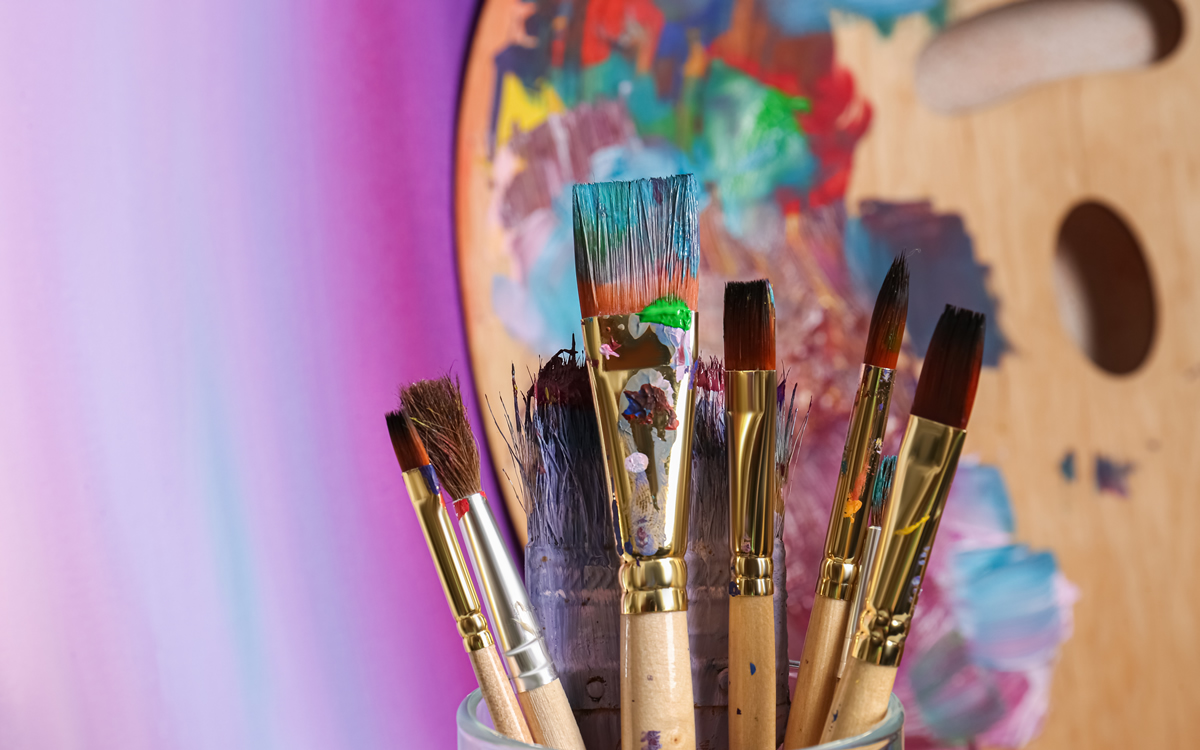
New England artists Caroline Rufo and John Rufo, also known as RufoArt will open an exhibition on Thursday, Aug. 10 at 6 p.m. at Nepenthe Gallery.
The husband-and-wife duo will share their paintings and also talk about their inspirations. Caroline explores the natural beauty, ideas, and systems of power that create her surroundings while John works toward an understanding of art as a representation of singular moments of both immediate presence and a larger context of wholeness.
For more details, visit Nepenthe Gallery’s website.
-

 U.S. Supreme Court3 days ago
U.S. Supreme Court3 days agoSupreme Court rejects Kim Davis’s effort to overturn landmark marriage ruling
-

 District of Columbia3 days ago
District of Columbia3 days agoCapital Pride files anti-stalking complaint against local LGBTQ activist
-

 Politics10 hours ago
Politics10 hours agoPro-trans candidates triumph despite millions in transphobic ads
-

 Dining3 days ago
Dining3 days agoSpark Social House to start serving alcohol



















